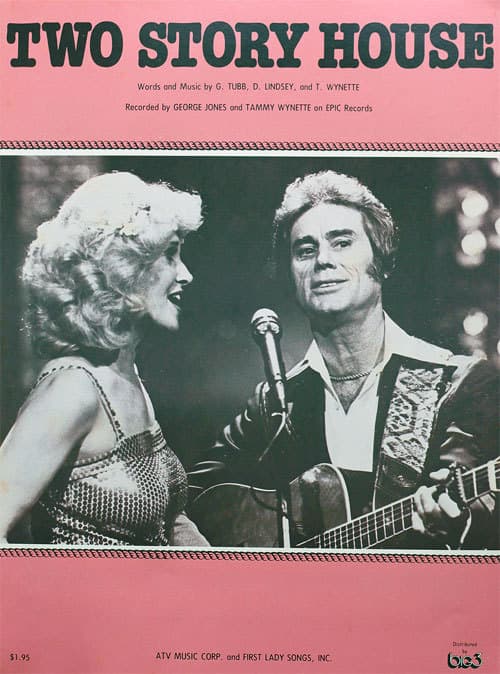
The Hollow Mansion: A Monument to a Love That Money Couldn’t Buy
For those of us who lived through the tumultuous, electrifying saga of George Jones and Tammy Wynette, their music was never just songs—it was a real-time soundtrack to the most celebrated and agonizing divorce in country music history. Their love, their life, and especially their divorce, were utterly inseparable from the mournful steel guitars and the raw emotional power of their duets. Released in 1980, “Two Story House” arrived five years after their bitter split, a chillingly candid masterpiece of reflection that immediately soared up the charts, serving as a powerful, undeniable testament to their lingering, painful chemistry.
The single, released from their reunion album, Together Again, did not just perform well—it was an instant classic that resonated deeply with fans who understood the cost of their celebrity. “Two Story House” climbed all the way to No. 2 on the Billboard Hot Country Singles chart in the spring of 1980, and even reached No. 1 on the RPM Country Tracks chart in Canada. The enduring success proved that even in separation, the “Possum” and the “First Lady of Country Music” were still the gold standard for portraying heartbreak.
The story behind this song is steeped in the couple’s genuine, heartbreaking reality. The lyrics, co-written by Tammy Wynette herself (along with David Lindsey and Glenn Douglas Tubb), are a direct, agonizing metaphor for the failure of their marriage. The “two-story house” in the song is not some anonymous set piece; it is widely understood to represent the opulent, beloved Florida mansion the couple shared during their marriage, often referred to as the “Old Plantation Music Park.” Tammy had dreamed of a beautiful southern estate, and they achieved it, filling the 6,390-square-foot home with expensive antiques, marble floors, and chandeliers. The opening lines cut straight to the bone: “We always wanted a big two story house / Back when we lived in that little two-room shack,” before delivering the crushing conclusion: “We filled the house with everything / But somehow left love out.”
This song is the ultimate emotional inventory taken after the dust settles. It details the couple’s climb to success—the accumulation of wealth, the grand home, the appearance of the perfect life—only to reveal the emotional chasm that grew between them in the process. While they were busy building a material dream on the ground floor and the second floor, the relationship itself was crumbling in the spaces between. Jones’s rich, world-weary baritone and Wynette’s tear-stained contralto trade verses, not as lovers singing to each other, but as two people standing on separate floors of their gilded cage, calling out the tragic truth of their failure. The genius of the performance lies in the palpable tension and residual affection still evident in their voices, proving that even after divorce, some ties remain unbroken, even if they’re tied in knots of regret.
For those of us who followed their every heartbreak through the radio, “Two Story House” is more than just a song; it’s a photograph of a dream shattered by personal demons and professional pressure. It’s a powerful, cautionary tale that no amount of success, fame, or material splendor can compensate for the absence of true, healthy love. It’s a moment of profound, shared catharsis, delivered by the two people who understood its bitter truth better than anyone else.